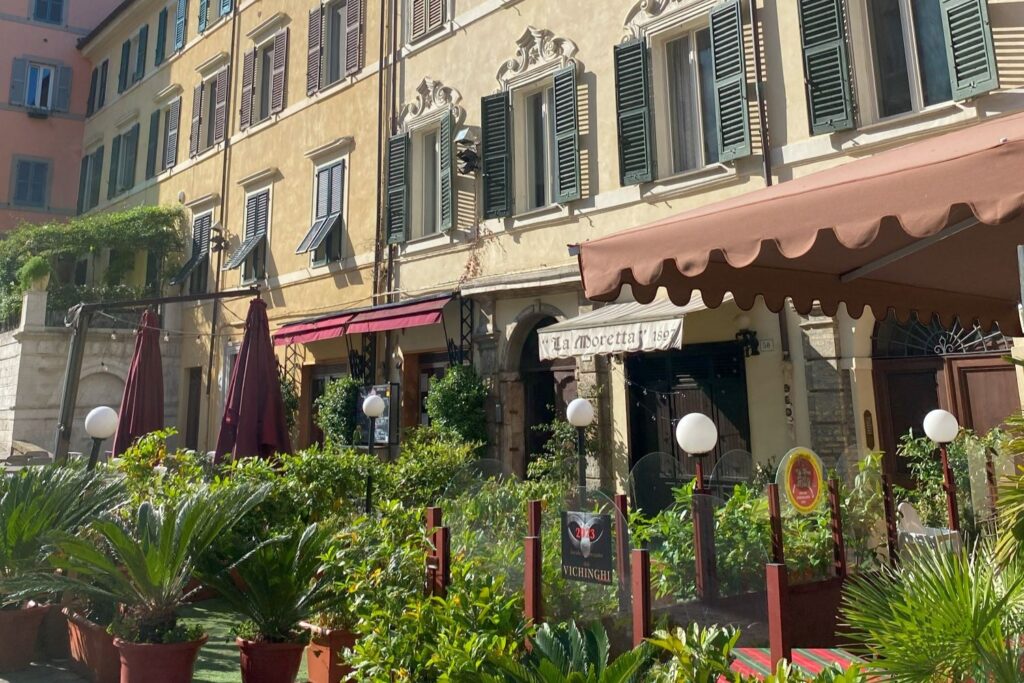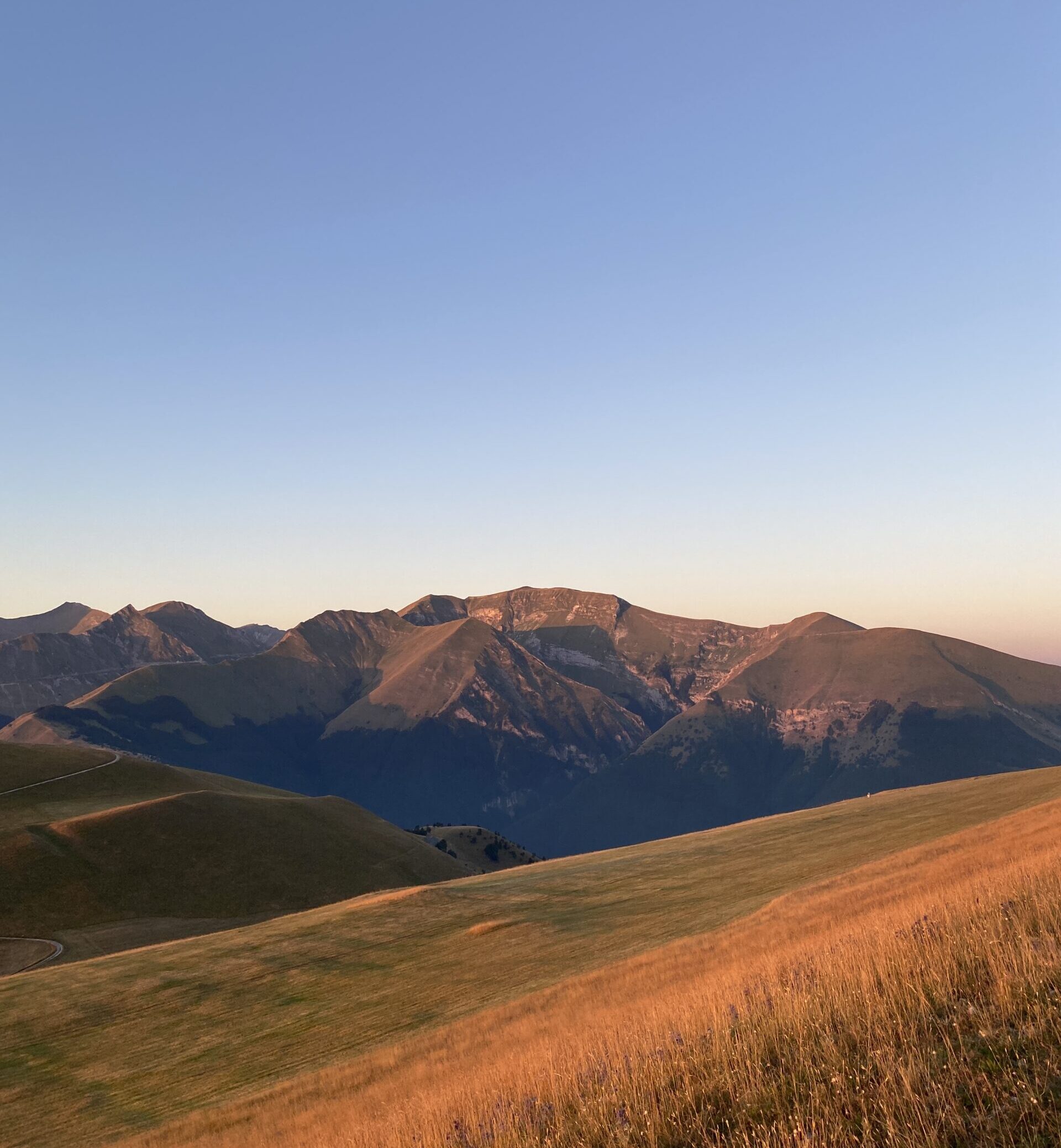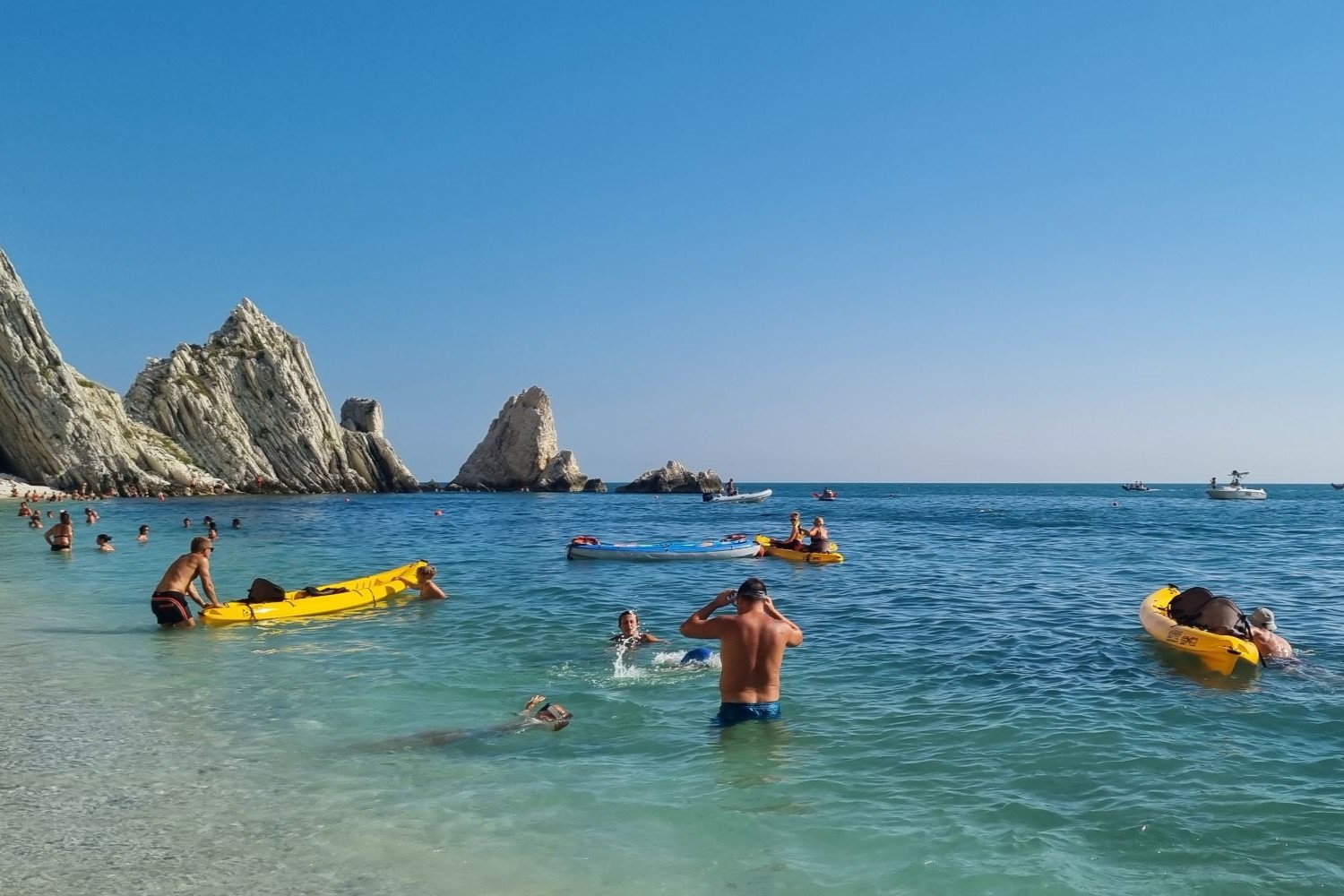Ancona is the capital of the Le Marche, and a hidden gem for travelers who want to explore a less touristy destination. Ancona has a rich history, a beautiful coastline, and a lively culture that makes it a perfect place to experience the authentic Italian lifestyle. In this short guide we’ll cover some of the main attractions you must see while visiting Ancona.

A Brief History of Ancona
The history of Ancona has been linked to its port and navigation activities since 387 BC, when it became a Greek colony of Syracuse. It was the Greek settlers that gave it its current name: Ancona stems from the Greek word Ἀγκών (Ankṓn), meaning “elbow”; the harbour to the east of the town was originally protected only by the promontory on the north, shaped like an elbow.
In Roman times, under the emperor Trajan, its harbour was of considerable importance in imperial times, serving as a place of bustling trade.
After 1000, Ancona became increasingly independent, eventually turning into an important maritime republic, often clashing against the nearby power of Venice. During this period it experienced its golden age, both artistically and economically, earning the nickname of “gateway to the east“.
In 1532 Ancona definitively lost its freedom and became part of the Papal States, under Pope Clement VII.
During the Risorgimento Ancona actively participated in the struggles for the unification of Italy, especially during the First War of Independence.
Sightseeing Ancona
Start your sightseeing by parking your car at Parcheggio degli Archi, a convienently located indoor car park. From here you will walk under the archi untill you reach Porta Pia, a large city gate in that serves as the entrance gate to Mole Vanvitelliana.

Mole Vanvitelliana is an impressive work by Luigi Vanvitelli, who transformed an existing fortification into a pentagonal mole (a breakwater structure) that protects the harbour from storms and waves. It was built between 1738 and 1749, and has a diameter of 250 meters. It has five bastions connected by walls and gates, and a lighthouse on the top.
Here you can also find Lazzaretto, a pentagonal building built between 1732 and 1743 as a quarantine station for plague victims and sailors arriving from abroad.
Arco di Troiano and Cattedrale di San Ciriaco
From here you will start entering the harbor area that offers panoramic views of the Adriatic Sea. At the entrance of the harbor you can see the Arch of Trajan, one of the most famous monuments of Ancona, and a symbol of its Roman heritage.
The Arch was built in honour of Emperor Trajan for his works on improving the port. It is made of white marble from Luna (modern Carrara), and has a single archway that spans 18.5 meters. It is decorated with Corinthian columns and statues of Trajan and his wife Plotina.
From the port you can head up to visit the Cathedral of San Ciriaco, perched on Monte Guasco its one of the most beautiful examples of Romanesque-Gothic architecture in Italy. It is situated on a hill overlooking the city and the sea, on the site of an ancient temple dedicated to Venus Erycina.


The walk to get to the cathedral consisting of an atmospheric path and staircase leading towards the iconic structure that makes for a beautiful hazy walk in the morning. The cathedral is also the perfect location to absorb beautiful views of Ancona!

Museo Archeologico Nazionale delle Marche
On your way down from the Cathedral of San Ciriaco take a look at the Museo archeologico nazionale delle Marche. This museum is housed in the former convent of San Domenico, and displays a collection of artifacts from prehistoric to medieval times, with a focus on the Picentes and the Roman period.
Piazza del Plebescito
Next head down to Piazza del Plebescito, one of the many impressive squares of Ancona. The square is home to Palazzo del Governo, Torre dell’Orologio, and Chiesa di San Domenico, a beautiful baroque-style church. You can also find a stunning array of lovely cafes and restaurants in the area, which is an idyllic spot to grab a cappuccino. There are also regular festivals and events held here, so be sure to check the events calendar when you visit Ancona.

Close to the Piazza del Plebiscito is a striking richly decorated building: the Loggia dei Mercanti. The loggia dates from the fifteenth century, an economically very prosperous period for Ancona. It was built near the port, which was the trade point of the mercantile republic in medieval times, in order to provide a meeting point for the traders. On the facade are four images of virtues that a good trader should never lose sight of: hope, courage, justice and charity.
After the Loggia dei Mercanti slowley make your way to Piazza Cavour. Allow yourself to wonder the small streets. Along the way make sure to stop at Fontana del Càlamo, also called the Fontana delle Tredici Cannelle. The fountain is made up of thirteen masks spouting water, from which the common denomination of Fontana delle Tredici Cannelle derives. The masks, 12 of which are in bronze and the central one in stone, depict satyrs and fauns. According to an ancient tradition, the traveler wishing to return to the city should drink the water that flows from the fountain.

On Corso Giuseppe Mazzini you will also find Mercato delle Erbe, a covered market with stalls full of beautifully displayed vegetables, fruit, fish, meat, cheese, etc. The building itself is also more than worth a visit.


Il Passetto
Next head to Il Passetto, the city beach where residents come to sunbathe and socialize. The walk there is also quite lovely. From Piazza Cavour to Piazza IV Novembre (where the steps to the beach are) you walk in the shade of the trees on Viale della Vittoria, a wide avenue with a promenade between the two lanes. At the end of the avenue you can find a monument that commemorates the fallen of World War I. It was designed by Guido Cirilli andin the 1920s.

Behind the monument are the stairs to the wide beach that, thanks to the current in the sea, has perfect bathing water. Among the locals of the area, the habit of fishing moscioli, the local name for mussels, is widespread in the nearby cliffs. A peculiarity of this stretch of coast is the presence of more than two hundred caves dug into the rock and used as a shelter for small fishing boats. The colored gates, the slipways for the boats, the fishing equipment make form a nice contrast with the white background.

Tip: if you don’t feel like climbing the stairs after a day of sunbathing and swimming, you can take the elevator back up for one euro.
For lunch stop at Spaghetteria n°9 for a unique experience and delicious fresh pasta. This small restaurant is a one man show so don’t be surprised if the chef is taking orders in between cooking them up and organizing complimentary tiramisu .

Beaches around Ancona
Just 20 minutes by car from Ancona you can find one of the most beautiful beaches of Le Marche: the beach of Portonovo. Portonovo is located just under Monte Conero. It is a true oasis, between crystal clear water, its beautiful snow-white pebbles and breathtaking views. The beach of Portonovo is also called the Green Bay because of its particularity of being completely immersed in the nature of the Conero Park and far from busy roads.







